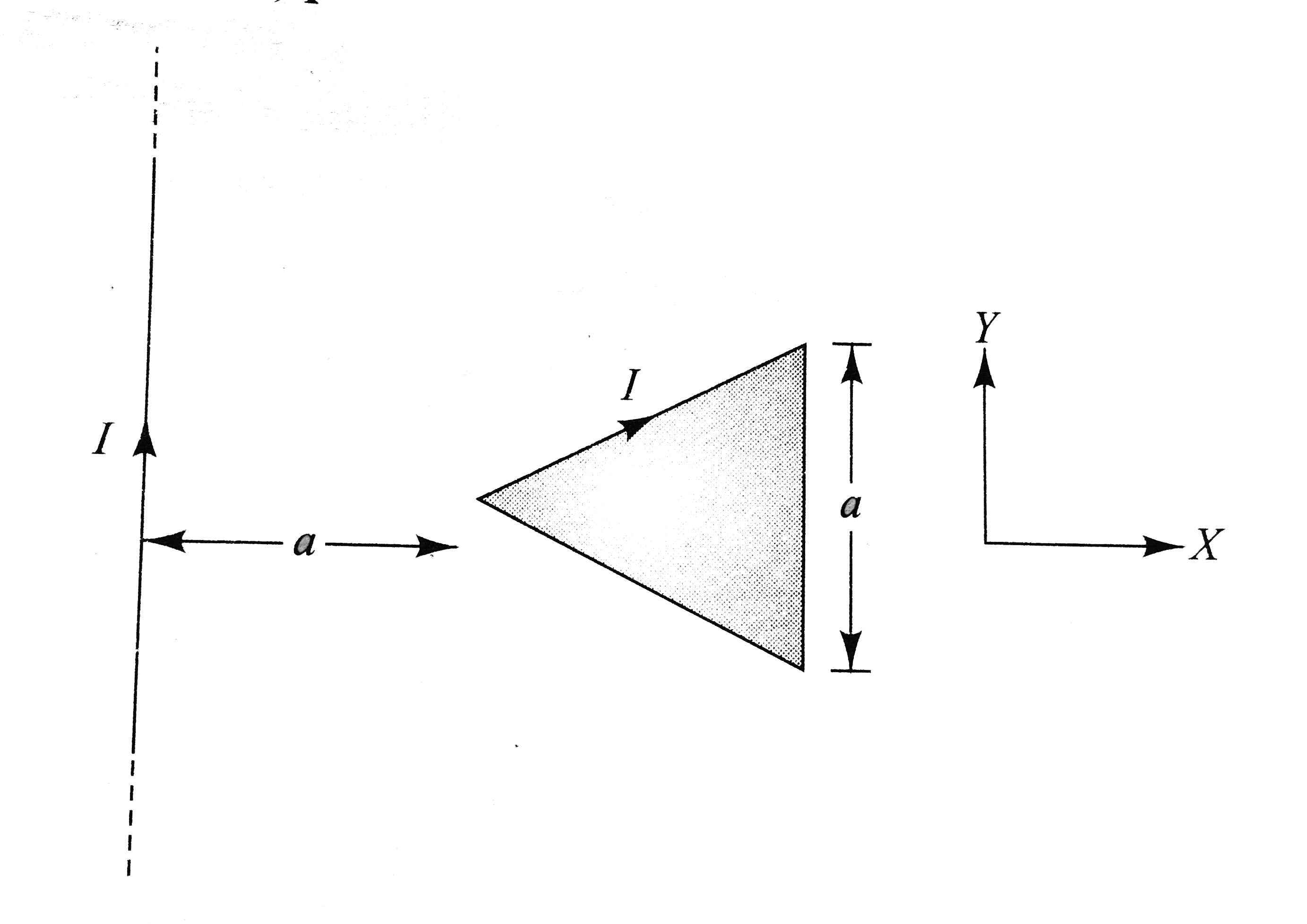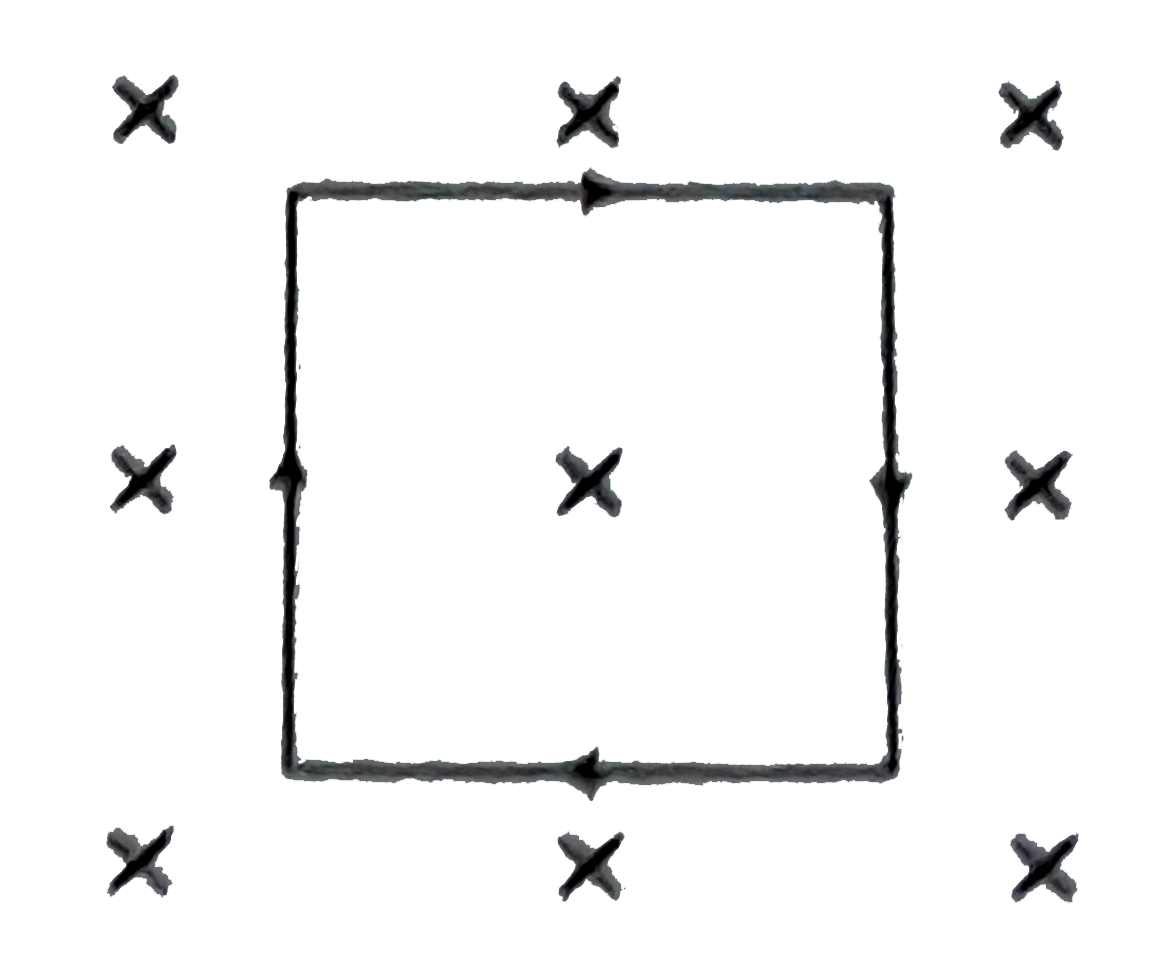Assertion If a magnet is brought closer to a current carrying loop along its axis, then current always decreases in the loop.
Reason Magnet is repelled by the loop.
If both Assertion and Reason are corrent and Reason is the corrent explanation of Assertion.
If both Assertion and Reason are correct but Reason is not the correct explanation of Assertion.
If Assertion is true but Reason is false.
If Assertion is false but Reason is ture.
The correct Answer is:B
To solve the question, we need to analyze both the assertion and the reason provided.
Step 1: Understanding the Assertion
The assertion states that if a magnet is brought closer to a current-carrying loop along its axis, then the current always decreases in the loop.
- Explanation: According to Faraday's law of electromagnetic induction, a change in magnetic flux through a loop induces an electromotive force (EMF) in the loop. If a magnet is brought closer to the loop, the magnetic flux through the loop increases. According to Lenz's Law, the induced current will flow in such a direction as to oppose the change in magnetic flux. If the magnet is moving closer, the loop will generate a current in the opposite direction to oppose the increase in flux, which can lead to a decrease in the original current in the loop.
Step 2: Understanding the Reason
The reason states that the magnet is repelled by the loop.
- Explanation: The reason is related to Lenz's Law, which states that the induced current will create a magnetic field that opposes the change in magnetic flux. When the magnet approaches the loop, the loop generates a magnetic field that opposes the magnet's field, leading to a repulsion effect. However, this does not directly explain why the current decreases; it merely describes the interaction between the magnet and the loop.
Step 3: Conclusion
- Both the assertion and the reason are correct statements.
- However, the reason provided does not correctly explain the assertion. The assertion is about the decrease in current due to the induced EMF opposing the change in flux, while the reason discusses the repulsion without addressing the current's behavior directly.
Final Answer
Both assertion and reason are correct, but the reason is not the correct explanation for the assertion. Therefore, the correct option is: Both assertion and reason are correct, but reason is not the correct explanation for assertion.
---
The assertion states that if a magnet is brought closer to a current-carrying loop along its axis, then the current always decreases in the loop.
The reason states that the magnet is repelled by the loop.
- Both the assertion and the reason are correct statements.
- However, the reason provided does not correctly explain the assertion. The assertion is about the decrease in current due to the induced EMF opposing the change in flux, while the reason discusses the repulsion without addressing the current's behavior directly.
Both assertion and reason are correct, but the reason is not the correct explanation for the assertion. Therefore, the correct option is: Both assertion and reason are correct, but reason is not the correct explanation for assertion.
Topper's Solved these Questions
- BOOK - DC PANDEY ENGLISHCHAPTER - ELECTROMAGNETIC INDUCTIONEXERCISE - Match the columns5videos
ELECTROMAGNETIC INDUCTION
- BOOK - DC PANDEY ENGLISHCHAPTER - ELECTROMAGNETIC INDUCTIONEXERCISE - Medical entrances gallery25videos
ELECTROMAGNETIC INDUCTION
- BOOK - DC PANDEY ENGLISHCHAPTER - ELECTROMAGNETIC INDUCTIONEXERCISE - Taking it together119videos
ELECTROMAGNETIC INDUCTION
- BOOK - DC PANDEY ENGLISHCHAPTER - CURRENT ELECTRICITYEXERCISE - Medical entrances gallery97videos
CURRENT ELECTRICITY
- BOOK - DC PANDEY ENGLISHCHAPTER - ELECTROMAGNETIC WAVESEXERCISE - Sec C22videos
ELECTROMAGNETIC WAVES
Similar Questions
A current loop in a magnetic field
View SolutionThe magnetic dipole moment of a current carrying conducting loop depends on
View SolutionWhat will be magnetic field at centre of current carrying circular loop of radius R?
View SolutionA current carrying loop in a uniform magnetic field will experience
View SolutionMagnetic field at the centre of regular hexagon current carrying loop of side length l and current i is
View SolutionAn equilateral triangular loop is kept near to a current carrying long wire as shown fig. under the action of magnetic force alone, the loop
 View Solution
View SolutionThe resultant force on a square current loop PQRS due to a long current carrying conductor will be (if the current flow in the loop is clockwise)
 View Solution
View SolutionA: The magnetic moment of a current carrying planar loop does depend on the space of the loop.
R: The magnetic moemnt is a vector quantity.View SolutionFigure shows a square current carrying loop ABCD of side 10 cm and current i = 10A. The magnetic moment of the loop is:
 View Solution
View SolutionAssertion Net torque in the current carrying loop placed in a uniform magnetic field (pointing inwards) is zero.

Reasonl Magnetic moment (M) is inwards.View Solution

